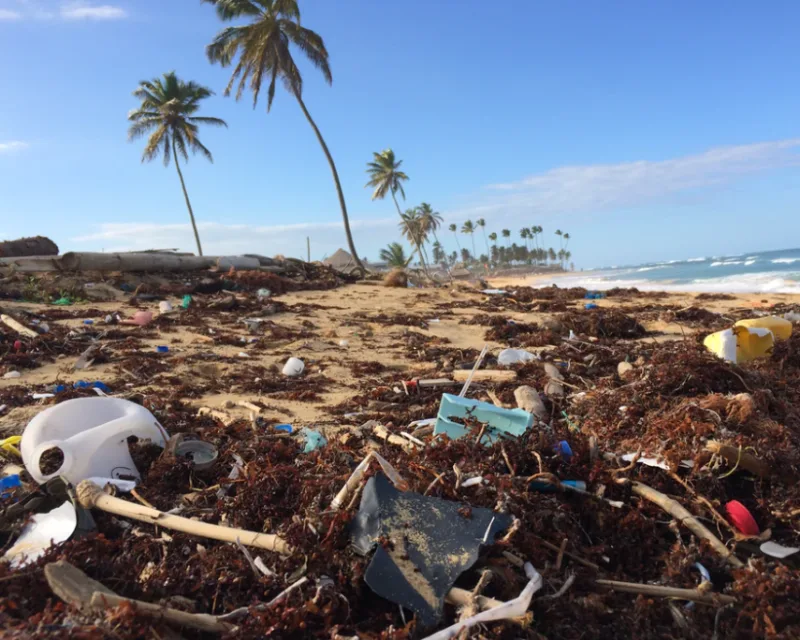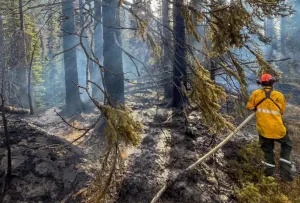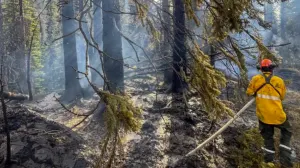
Climate refugees can’t be sent back, says landmark UN human rights ruling
The United Nations predicts that climate change could displace anywhere between 25 million to one billion people by 2050.
Refugees who are fleeing the effects of climate change cannot be forced to return home by their adoptive countries, according to a new decision by the United Nations Human Rights Committee. This landmark ruling is expected to influence many future claims by the increasing number of people that are being displaced around the world by the impacts of climate change, including increasingly severe weather events and rising sea levels.
The ruling comes from the judgement on the case of Ioane Teitiota, a man from the island of Tarawa in the Republic of Kiribati who sought asylum in New Zealand in 2015. Tarawa is an island in the central Pacific Ocean and is facing extreme impacts from the changing climate including limited freshwater due to saltwater contamination and the loss of inhabitable land from rising sea levels. Dwindling resources have caused a housing crisis and land disputes, which have resulted in numerous fatalities, and Teitiota claimed that Kiribati has become a dangerously violent environment for himself and his family.
The committee ruled against Teitiota because it was determined that his life was not at an imminent risk if he returned by to Kiribati, but did state that it would be a violation of people’s international rights if countries force them back home where climate change does pose an immediate threat, such as a person’s ability to grow food or access potable water. This ruling is considered to be a landmark decision because it establishes new regulations under international law and sets an important precedent that will guide nations on their future decisions of granting asylum when people seek refuge as a result of climate change.
This scenario is one that nations and governing bodies are increasingly facing and the UN estimates that there could be anywhere between 25 million and 1 billion environmental migrants by 2050 due to the instability caused by extreme weather events and rising sea levels.
Related: Spectacular sites in Canada to visit before they disappear
COUNTRIES THAT COULD DISAPPEAR THIS CENTURY
Island nations that are only a few metres above sea level will be the first countries that face the consequences of the greenhouse gas emissions that are causing glaciers and ice sheets to melt. The IPCC projects that sea levels could rise within a range of 52 cm to 98 cm by 2100, with a rate of 6 to 16 mm per year. The rate of sea level rise differs across regions and can be impacted by temperatures, regional winds, and ocean currents and is going to impact the countries that have had some of the most minor contributions to global greenhouse gas emissions.
See below for a look at the countries that are the most at-risk of disappearing due to global climate change.
Kiribati

South Tarawa in the Republic of Kiribati is a narrow strip of land between the lagoon and the ocean. Credit: Government of Kiribati/Wikimedia Commons. CC BY 3.0
The average elevation of this archipelago that is located in the Pacific Ocean is less than 2 metres above sea level and significant amounts of the country are expected to be underwater by 2050. Kiribati is one of the most isolated countries on Earth and eroding landscapes are hindering the ability of the 100,000 residents to grow food and collect freshwater. The IPCC predicts that a sea level rise of one metre could inundate over 65 per cent of the country by the end of this century.
Maldives

Malé, the capital of Maldives. Credit: Shahee Ilyas/Wikimedia Commons. CC BY-SA 3.0
The Maldives is a chain of nearly 1,200 islands and not one is more than 1.8 metres above sea level, which makes it the world’s lowest-lying nation. Millions of tourists have visited this luxurious destination, however, the nation faces catastrophic impacts from climate change as oceans are rising and extreme weather events are creating progressively intense floods. Members of the Maldives’ Cabinet drew international attention to the imminent danger of sea level rise by holding an underwater meeting while wearing scuba gear in 2009.
Seychelles

A beach resort in Seychelles. Credit: Le Domaine de la Réserve/Wikimedia Commons. CC BY-SA 4.0
While Seychelles has become a popular destination for luxurious getaways, the nation’s government has increased efforts to make a global plea to raise awareness about how climate change is harming the 115 nations. The Seychelles president, Danny Faure, gave the first-ever live speech from an underwater submersible to draw attention to the rising sea levels. The Seychelles News Agency states that a one metre rise could flood most of the country and would cause 70 per cent of the landmass to disappear.
Tuvalu

The Tuvalu Meteorological Service in Funafuti. Credit: Davidarfonjones/Wikimedia Commons. CC BY-SA 3.0
The total land area of Tuvalu is just 26 square kilometres, which makes it the fourth smallest nation in the world and is home to just 11,000 people. Most of the islands are barely 3 metres above sea level and waves during the storms swallow large parts of the country and have deposited so much salt on the soil that the ground has become largely unusable for growing food. Sea level rise projections indicate that Tuvalu could become uninhabitable in the next 50 to 100 years and many residents have already begun seeking refuge in other countries.
Soloman Islands

A village near Auki, the capital of Malaita. Credit: Irene Scott/AusAID/Wikimedia Commons. CC BY 2.0
The Soloman Islands consists of nearly 1,000 islands and atolls communities have started their relocation process since several villages that were established in 1935 have been destroyed by the rising sea. These islands have an average elevation of 0 metres above sea level, which means that the 642,000 inhabitants will be forced to soon seek refuge elsewhere as surrounding sea levels are rising at an average of 8 mm per year since 1993.
Marshall Islands

The Marshall Islands. Credit: Christopher Michel/Wikimedia Commons. CC BY 2.0
The Marshall Islands is another country that has an average elevation of 0 metres above sea level and is facing challenges as they prepare for significant parts of the country to relocate. One particular concern is the Runit Dome, which is a crater that was created by U.S. nuclear testing and holds over 3.1 million cubic feet of U.S.-produced radioactive soil and debris and contains lethal amounts of plutonium. Rising sea levels have caused the dome to crack and leak plutonium into the Pacific Ocean and the U.S. has committed millions to the Pacific region for disaster resilience.











